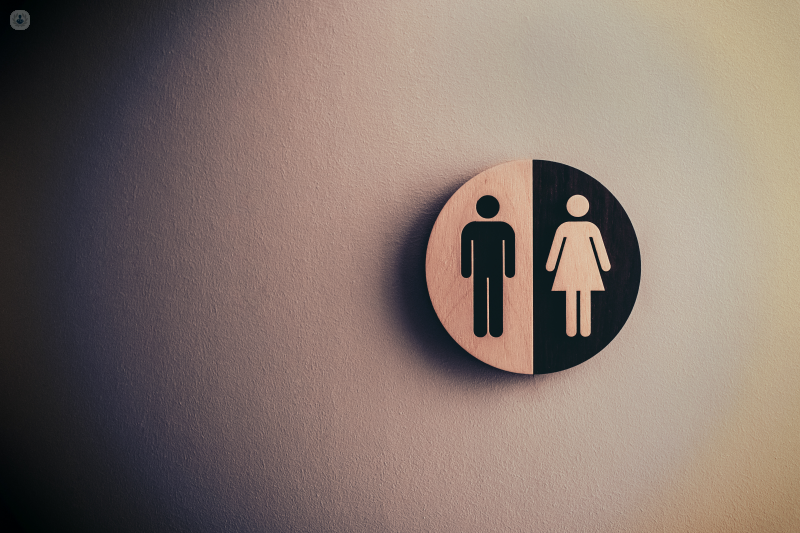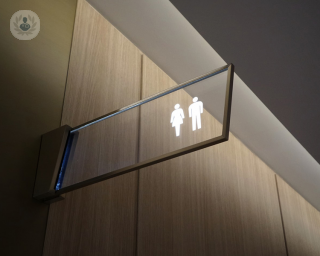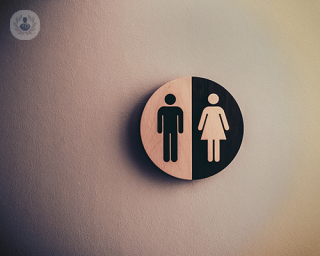Stress incontinence
Mr Nick Elkington - Obstetrics & gynaecology
Created on: 12-11-2019
Updated on: 09-19-2023
Edited by: Conor Dunworth
What is stress incontinence?
Stress incontinence is the unintentional loss of urine when physical movement puts your bladder under pressure, for example, if you laugh or cough, run, sneeze or lift something heavy. Stress incontinence is much more common in women than in men.
The condition can impact your mental health and those who have stress incontinence may at times feel embarrassed, isolate themselves, or limit social and work life.

What are the causes of stress incontinence?
Stress incontinence is usually the result of damage or weakening of the muscles used to prevent urination (i.e urethral sphincter or pelvic floor muscles).
The bladder expands as it fills with urine. Usually, valve-like muscles in the urethra stay closed as the bladder expands. It prevents urine leakage until you reach a toilet.
However, if these muscles weaken, anything that adds pressure on the pelvic and abdominal muscles can cause pressure on your bladder and cause you to leak urine.
Factors that can increase the risk of developing stress incontinence can include the weakening of muscles. If you’re obese or overweight, the excess weight can increase pressure on the abdominal and pelvic organs.
Prostate surgery is one of the most common causes of stress incontinence in men. When the prostate gland is removed (prostatectomy) to treat prostate cancer this may result in a weakened sphincter.
In women, childbirth can weaken the pelvic floor muscles or the sphincter because of nerve or tissue damage during the delivery of a child. Stress incontinence from this can occur years later or soon after the birth of the child. Hysterectomies can also cause stress incontinence as well as some connective tissue disorders (for example Ehlers Danlos syndrome) and neurological conditions that affect the spinal cord and brain.
How can stress incontinence be treated?
There are a variety of treatment strategies to end or reduce the number of incontinence episodes:
- Pelvic floor muscle exercises – These movements can strengthen your pelvic floor muscles and urinary sphincter.
- Changes to lifestyle – Losing excess weight, treating a chronic cough and quitting smoking, for example, can lessen episodes of stress incontinence
- Training your bladder – Scheduling times to empty your bladder can reduce the severity or number of incontinence episodes.
- Fluid consumption – You may be recommended a certain amount and be given times when you’re allowed to.
- Medication – If you’re unsuitable for surgery or want to avoid having an operation, you may benefit from a medication called duloxetine.
- Devices – Certain devices designed for women may help control stress incontinence
You may be offered surgery if other treatments have been unsuccessful or unsuitable. These are some of the surgery and implant options available:
- Sling procedures – a sling is placed around the neck of the bladder to give support and to prevent leaks.
- Colposuspension – the neck of the bladder is lifted in position to prevent leaks in women with stress incontinence.
- Urethral bulking agents – a substance is injected into the walls of the urethra in women so that they increase in size, stopping leakages as the urethra is better able to stay closed.
- Artificial urinary sphincter – an artificial urinary sphincter is fitted to stop incontinence.

















